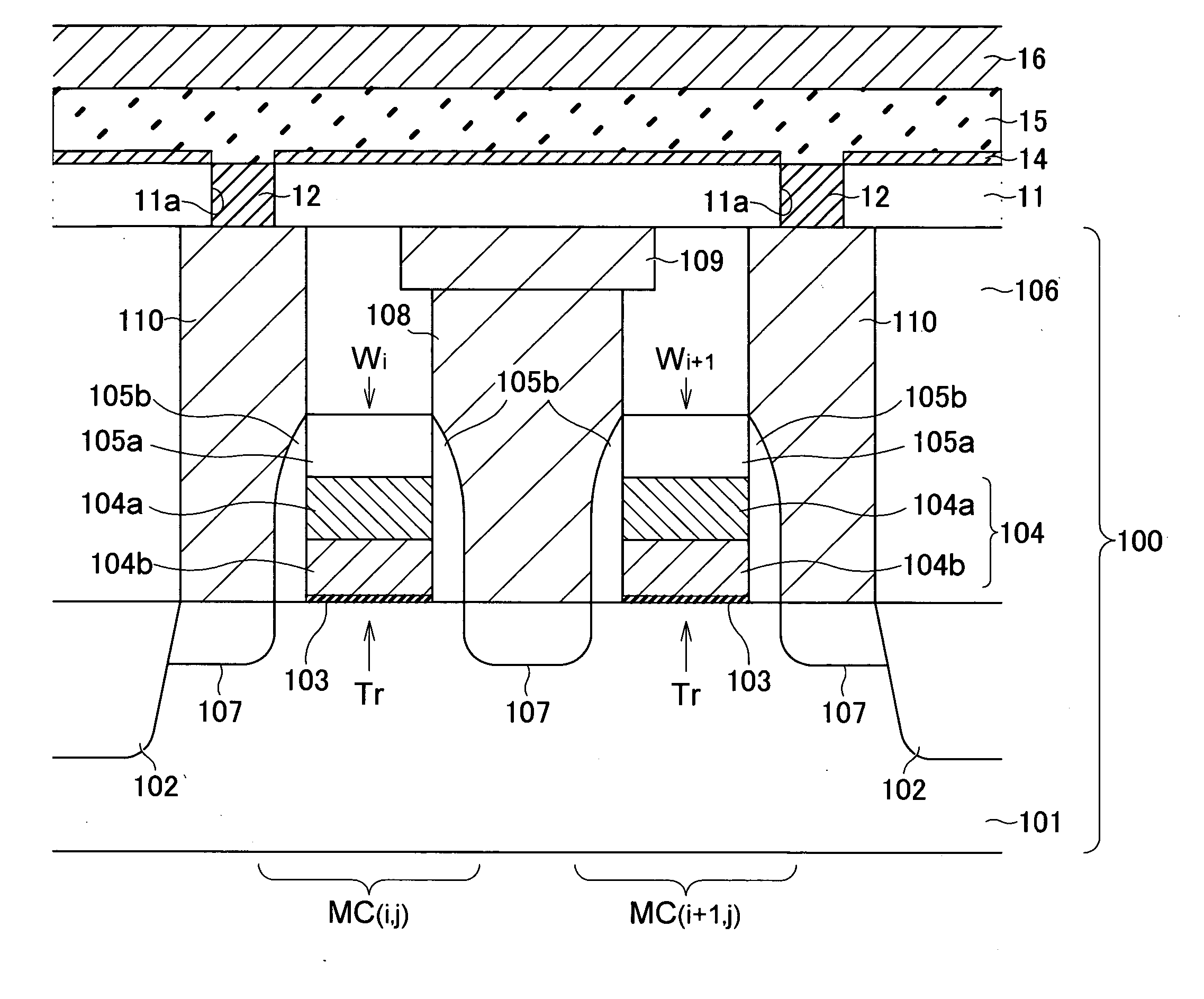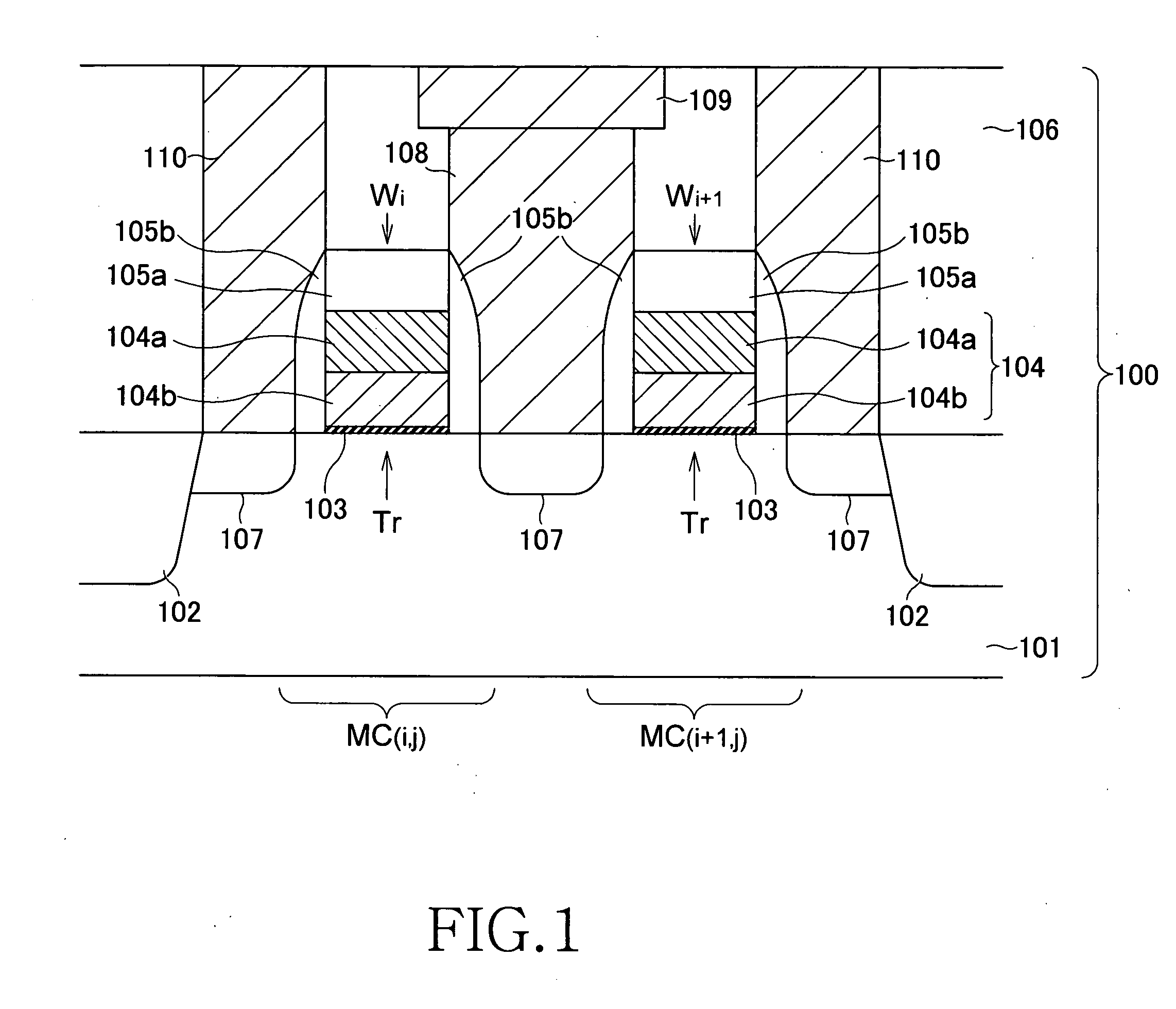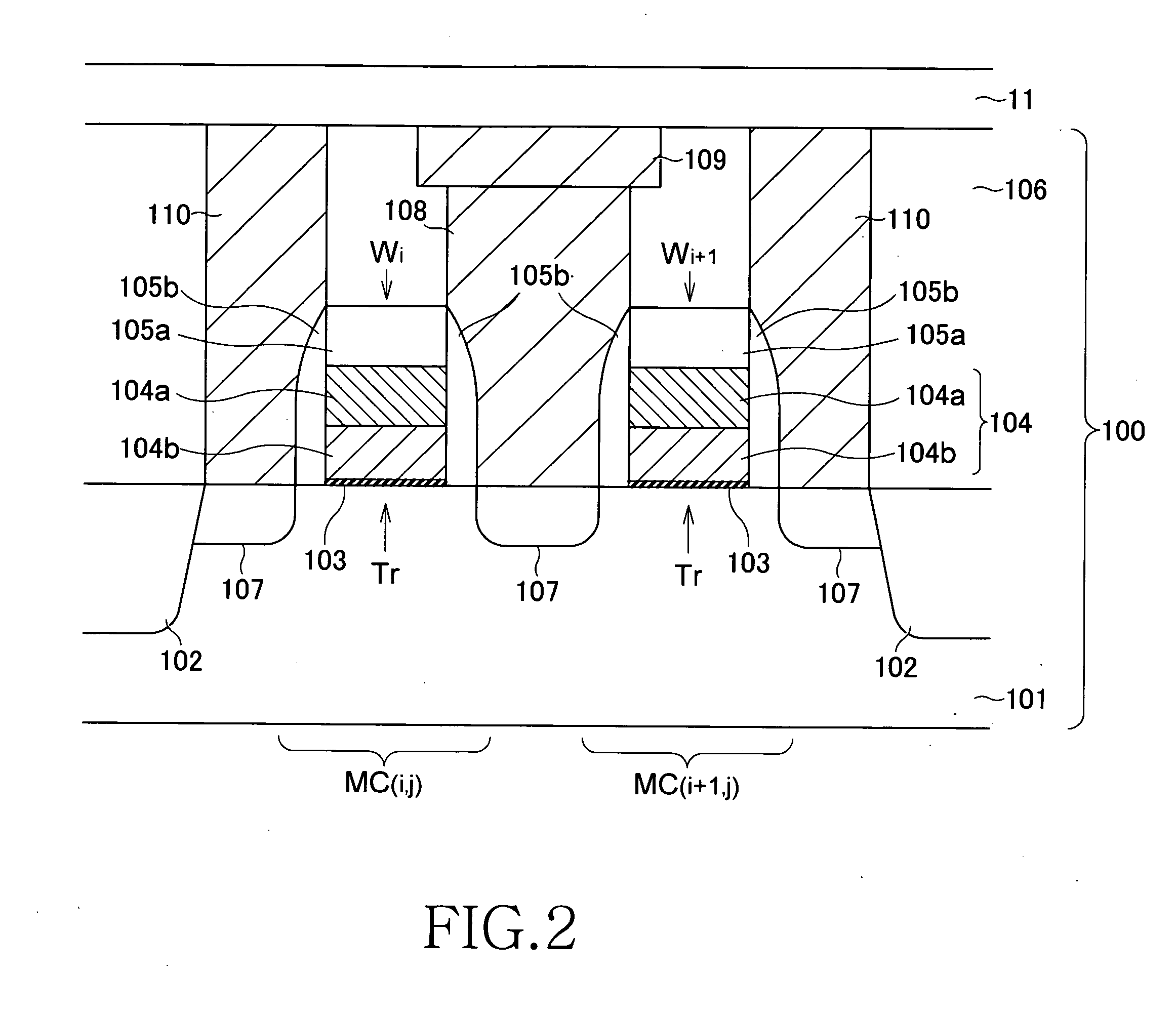Method of manufacturing non-volatile memory element
a non-volatile memory element, electrically rewritable technology, applied in the direction of basic electric elements, electrical apparatus, semiconductor devices, etc., can solve the problems of heat generation efficiency decline and problems such as rewriting current, and achieve the effect of reducing rewriting current, increasing heat generation efficiency, and reducing rewriting curren
- Summary
- Abstract
- Description
- Claims
- Application Information
AI Technical Summary
Benefits of technology
Problems solved by technology
Method used
Image
Examples
first embodiment
[0063] In the first embodiment described above, the adhesion layer 14 is diffused into the recording layer 15. Therefore, nitrogen is added to the GST or other chalcogenide material that constitutes the recording layer 15, and diffusion of the Ti that constitutes the adhesion layer 14 is induced by subsequent heat treatments. However, an adequate resistance ratio between the crystalline phase and the amorphous phase can be obtained using a chalcogenide material with no added nitrogen. Such a method will be explained in detail below.
[0064]FIG. 13 is a flowchart showing a method of manufacturing a non-volatile memory element according to a second preferred embodiment of the present invention.
[0065] As shown in FIG. 13, in the manufacture of a non-volatile memory element according to the present embodiment, first, a non-volatile memory element having a recording layer 15 without added nitrogen is formed (S101). The non-volatile memory element can be manufactured according to the manuf...
second embodiment
[0074] In the second embodiment described above, the adhesion layer 14 only above the lower electrode 12 is vanished by performing the initializing process of non-volatile memory element having the recording layer without added nitrogen. However, the adhesion layer 14 above the lower electrode 12 may be removed by photolithography and dry-etching after laminating the adhesion layer 14.
[0075]FIG. 16 is a flowchart showing a method of manufacturing a non-volatile memory element according to a third preferred embodiment of the present invention.
[0076] As shown in FIG. 16, in the manufacture of a non-volatile memory element according to the present embodiment, first, an adhesion layer 14 without added nitrogen is formed (S201). The adhesion layer 14 is formed on an interlayer insulating film 11 so that an electrical connection is established with a lower electrode 12. Next, the adhesion layer 15 above the lower electrodes 12 is partially removed by photolithography and dry-etching (S20...
PUM
 Login to View More
Login to View More Abstract
Description
Claims
Application Information
 Login to View More
Login to View More - R&D
- Intellectual Property
- Life Sciences
- Materials
- Tech Scout
- Unparalleled Data Quality
- Higher Quality Content
- 60% Fewer Hallucinations
Browse by: Latest US Patents, China's latest patents, Technical Efficacy Thesaurus, Application Domain, Technology Topic, Popular Technical Reports.
© 2025 PatSnap. All rights reserved.Legal|Privacy policy|Modern Slavery Act Transparency Statement|Sitemap|About US| Contact US: help@patsnap.com



